Io And Europa Taken By The Voyager 1 Spacecraft In 1979
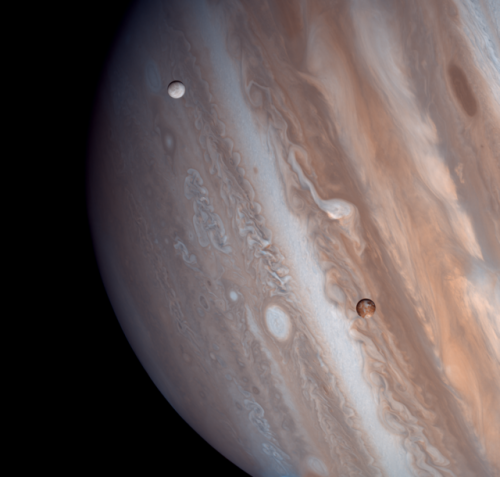
Io and Europa taken by the Voyager 1 spacecraft in 1979
Image credit: Justin Cowart
More Posts from Xyhor-astronomy and Others
A new detector can use neutrinos to help us take a peek inside Earth!
Solar System: Things to Know This Week
Our Dawn mission to the asteroid belt is no ordinary deep space expedition.
Instead of traditional chemical rockets, the spacecraft uses sophisticated ion engines for propulsion. This enabled Dawn to become the first mission to orbit not one, but two different worlds — first the giant asteroid Vesta and now the dwarf planet Ceres. Vesta and Ceres formed early in the solar system’s history, and by studying them, the mission is helping scientists go back in time to the dawn of the planets. To mark a decade since Dawn was launched on Sept. 27, 2007, here are 10 things to know about this trailblazing mission.
1. Ion Engines: Not Just for Sci-Fi Anymore

Most rocket engines use chemical reactions for propulsion, which tend to be powerful but short-lived. Dawn’s futuristic, hyper-efficient ion propulsion system works by using electricity to accelerate ions (charged particles) from xenon fuel to a speed seven to 10 times that of chemical engines. Ion engines accelerate the spacecraft slowly, but they’re very thrifty with fuel, using just milligrams of xenon per second (about 10 ounces over 24 hours) at maximum thrust. Without its ion engines, Dawn could not have carried enough fuel to go into orbit around two different solar system bodies. Try your hand at an interactive ion engine simulation.
2. Time Capsules

Scientists have long wanted to study Vesta and Ceres up close. Vesta is a large, complex and intriguing asteroid. Ceres is the largest object in the entire asteroid belt, and was once considered a planet in its own right after it was discovered in 1801. Vesta and Ceres have significant differences, but both are thought to have formed very early in the history of the solar system, harboring clues about how planets are constructed. Learn more about Ceres and Vesta—including why we have pieces of Vesta here on Earth.
3. Portrait of a Dwarf Planet

This view of Ceres built from Dawn photos is centered on Occator Crater, home of the famous “bright spots.” The image resolution is about 460 feet (140 meters) per pixel.
Take a closer look.
4. What’s in a Name?
Craters on Ceres are named for agricultural deities from all over the world, and other features carry the names of agricultural festivals. Ceres itself was named after the Roman goddess of corn and harvests (that’s also where the word “cereal” comes from). The International Astronomical Union recently approved 25 new Ceres feature names tied to the theme of agricultural deities. Jumi, for example, is the Latvian god of fertility of the field. Study the full-size map.
5. Landslides or Ice Slides?

Thanks to Dawn, evidence is mounting that Ceres hides a significant amount of water ice. A recent study adds to this picture, showing how ice may have shaped the variety of landslides seen on Ceres today.
6. The Lonely Mountain

Ahuna Mons, a 3-mile-high (5-kilometer-high) mountain, puzzled Ceres explorers when they first found it. It rises all alone above the surrounding plains. Now scientists think it is likely a cryovolcano — one that erupts a liquid made of volatiles such as water, instead of rock. “This is the only known example of a cryovolcano that potentially formed from a salty mud mix, and that formed in the geologically recent past,” one researcher said. Learn more.
7. Shining a Light on the Bright Spots

The brightest area on Ceres, located in the mysterious Occator Crater, has the highest concentration of carbonate minerals ever seen outside Earth, according to studies from Dawn scientists. Occator is 57 miles (92 kilometers) wide, with a central pit about 6 miles (10 kilometers) wide. The dominant mineral of this bright area is sodium carbonate, a kind of salt found on Earth in hydrothermal environments. This material appears to have come from inside Ceres, and this upwelling suggests that temperatures inside Ceres are warmer than previously believed. Even more intriguingly, the results suggest that liquid water may have existed beneath the surface of Ceres in recent geological time. The salts could be remnants of an ocean, or localized bodies of water, that reached the surface and then froze millions of years ago. See more details.
8. Captain’s Log
Dawn’s chief engineer and mission director, Marc Rayman, provides regular dispatches about Dawn’s work in the asteroid belt. Catch the latest updates here.
9. Eyes on Dawn
Another cool way to retrace Dawn’s decade-long flight is to download NASA’s free Eyes on the Solar System app, which uses real data to let you go to any point in the solar system, or ride along with any spacecraft, at any point in time—all in 3-D.
10. No Stamp Required

Send a postcard from one of these three sets of images that tell the story of dwarf planet Ceres, protoplanet Vesta, and the Dawn mission overall.
Make sure to follow us on Tumblr for your regular dose of space: http://nasa.tumblr.com.
Solar System: Things To Know This Week
Weather permitting, you can observe the Moon most nights, unless it’s a new moon, when the lighted side of the Moon faces away from Earth. The Moon is by far the brightest object in the night sky and there’s plenty to see. But this week is special…

…October 28 is International Observe the Moon Night (also known as InOMN).
Here’s all you need to know to join in and celebrate:
1. One Planet. One Moon. One Night.

Everyone on Earth is invited to join the celebration by hosting or attending an InOMN event and uniting on one day each year to look at and learn about the Moon together.
2. What’s Up?

October’s night skies are full of sights, from the first quarter Moon on InOMN to Saturn making a cameo appearance above the Moon October 23 and 24. Watch our What’s Up video for details.
3. Be Social

Hundreds of events are planned around the globe. Click the top link on this page for a handy map. You can also register your own event.
4. Don’t Just Stand There

Here are some activities for enhanced Moon watching.
5. Impress Your Friends with Moon Knowledge

Download InOMN flyers and handouts, Moon maps and even some pre-made presentations. There’s even a certificate to mark your participation.
6. Guide to the Face of the Moon

Almost dead center on the Earth-facing side of the Moon is the Surveyor 6 robotic spacecraft impact side. Apollo 12 and 14 are a bit to the left. And Apollo 11 - the first steps on the moon - are to the right. This retro graphic tells the whole story.
7. Moon Shots

NASA photographers have done some exceptional work capturing views of the Moon from Earth. Here are a few galleries:
You can’t have a solar eclipse without the Moon.
The 2016 “Supermoon” was pretty spectacular.
The Moon gets eclipsed, too.
That IS a Moon - AND the International Space Station.
The Moon is always a great photo subject.
Some spooky shots of the 2014 “Supermoon.”
And 2013.
Tips from a NASA pro for photographing the Moon.
8. Walking on the Moon

Twelve human beings walked on the face of the Moon. Here are some of the best shots from the Apollo program.
9. Moon Watch

Our Lunar Reconnaissance Orbiter is up there right now, mapping the moon and capturing some spectacular high-resolution shots.
10. Keep Exploring

Make our Moon portal your base for further lunar exploration.
Check out the full version of ‘Ten Things to Know This Week’ HERE.
Make sure to follow us on Tumblr for your regular dose of space: http://nasa.tumblr.com.

Messier 82
Messier 82 is a starburst galaxy about 12 million light-years away in the constellation Ursa Major. A member of the M81 Group, it is about five times more luminous than the whole Milky Way and has a center one hundred times more luminous than our galaxy’s center.
Image credit: NASA/ESA & Hubble










December 13, 1965 – Truly spectacular images of our planet captured by the astronauts of Gemini 7 as they zoomed around the Earth. In this era when we receive a daily dose of awesomeness from hi-res cameras on the ISS and various satellites, it’s easy to take beautiful Earth images for granted. I will never cease to be amazed by the stunning photography produced during the Project Gemini missions.
(NASA/Arizona State University)
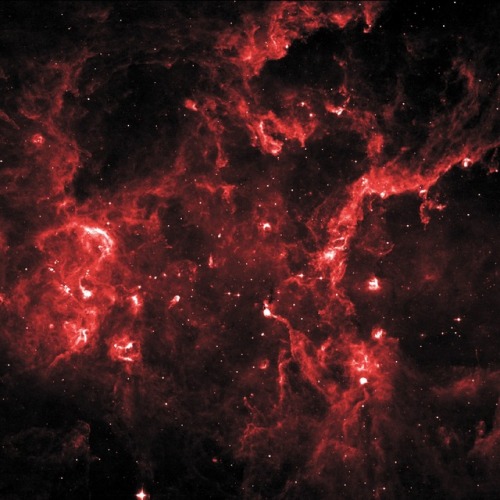
Young Stellar Grouping in Cygnus X
Cygnus X hosts many young stellar groupings. The combined outflows and ultraviolet radiation from the region’s numerous massive stars have heated and pushed gas away from the clusters, producing cavities of hot, lower-density gas.
In this 8-micron infrared image, ridges of denser gas mark the boundaries of the cavities. Bright spots within these ridges show where stars are forming today.
Credit: NASA/IPAC/MSX
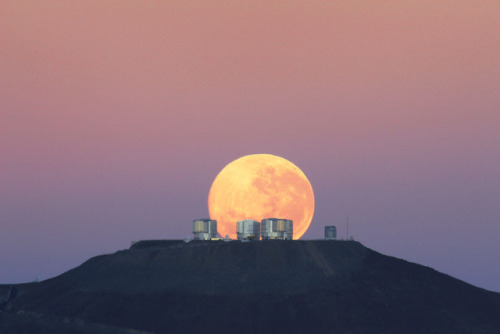
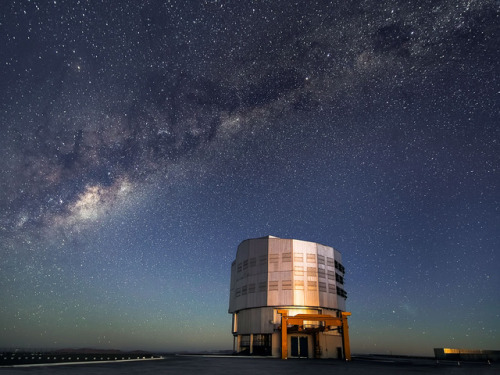
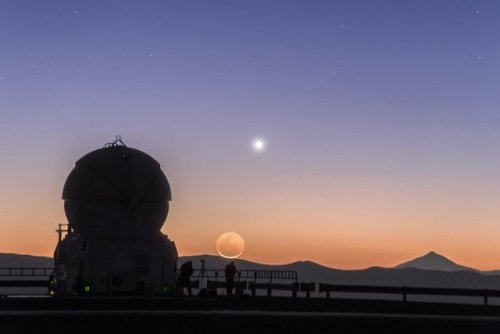
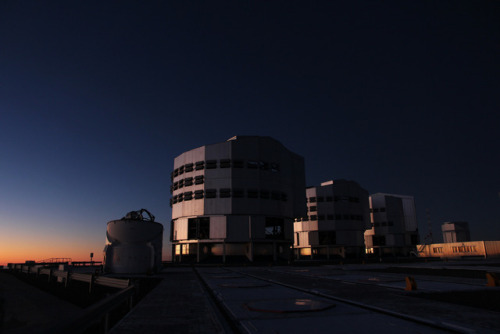
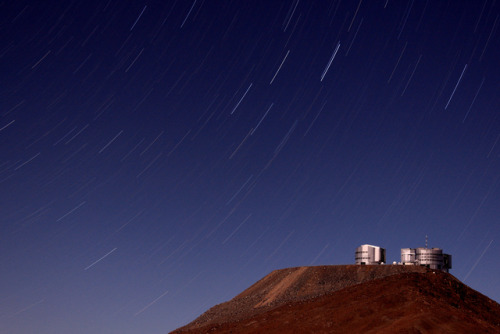
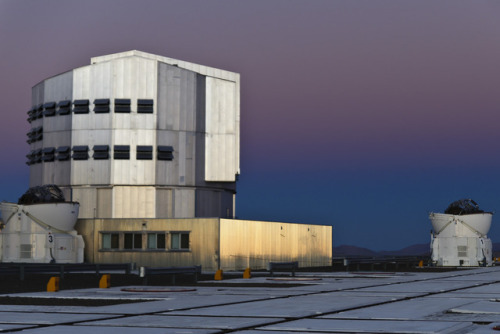
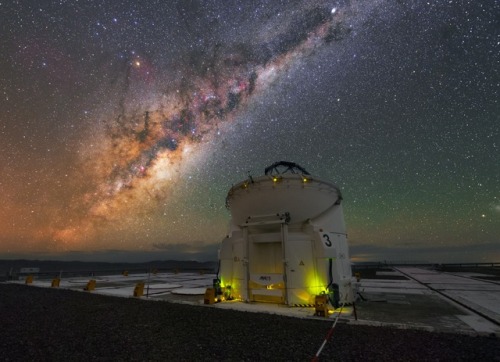
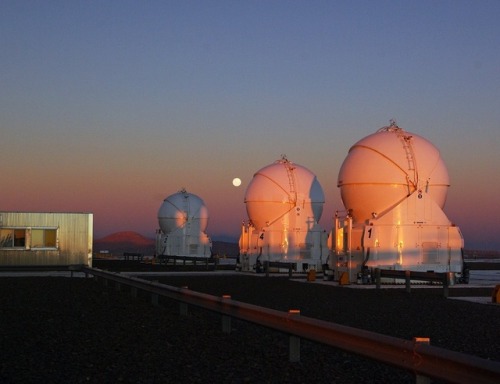
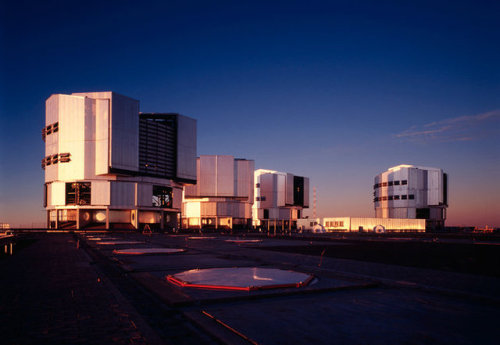
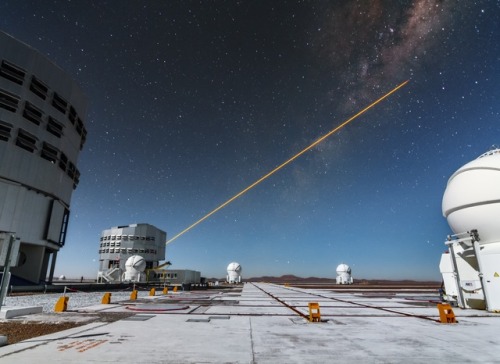
Very Large Telescope (VLT)
The Very Large Telescope (VLT) it is the world’s most advanced optical instrument, consisting of four Unit Telescopes with main mirrors of 8.2m diameter and four movable 1.8m diameter Auxiliary Telescopes.
The telescopes can work together, to form a giant ‘interferometer’, the ESO Very Large Telescope Interferometer, allowing astronomers to see details up to 25 times finer than with the individual telescopes. The light beams are combined in the VLTI using a complex system of mirrors in underground tunnels where the light paths must be kept equal to distances less than 1/1000 mm over a hundred metres. With this kind of precision the VLTI can reconstruct images with an angular resolution of milliarcseconds, equivalent to distinguishing the two headlights of a car at the distance of the Moon.
The 8.2m diameter Unit Telescopes can also be used individually. With one such telescope, images of celestial objects as faint as magnitude 30 can be obtained in a one-hour exposure. This corresponds to seeing objects that are four billion (four thousand million) times fainter than what can be seen with the unaided eye.
Source & images: eso.org
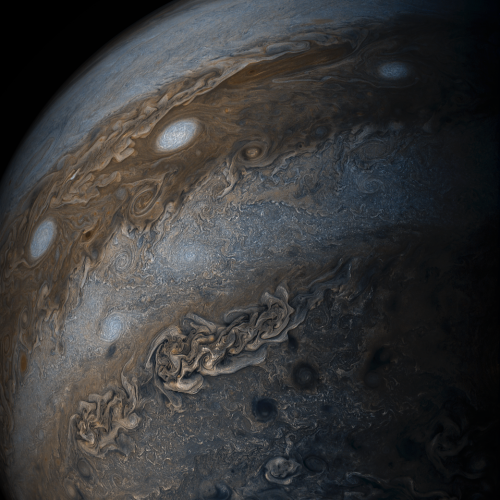
Jupiter’s Bands of Clouds
This enhanced-color image of Jupiter’s bands of light and dark clouds was created by citizen scientists Gerald Eichstädt and Seán Doran using data from the JunoCam imager on NASA’s Juno spacecraft.
Three of the white oval storms known as the “String of Pearls” are visible near the top of the image. Each of the alternating light and dark atmospheric bands in this image is wider than Earth, and each rages around Jupiter at hundreds of miles (kilometers) per hour. The lighter areas are regions where gas is rising, and the darker bands are regions where gas is sinking.
Credits: NASA/JPL-Caltech/SwRI/MSSS/Gerald Eichstädt /Seán Doran



(Causus maculatus) - Common names include forest rhombic night adder, West African night adder and spotted night adder.
When a star more massive than our sun reaches the end of its life cycle, it goes in a spectacular blaze of glory known as a supernova. This explosion indicates that the star is dunzo, dead, or whatever we call it in the parlance of our times. But a new study found that one unusual star zombie-Jon-Snowed itself and as an astronomer tells Inverse, no one knows quite how.
-
 tytodreams reblogged this · 1 year ago
tytodreams reblogged this · 1 year ago -
 juanthiccbitch reblogged this · 1 year ago
juanthiccbitch reblogged this · 1 year ago -
 juanthiccbitch liked this · 1 year ago
juanthiccbitch liked this · 1 year ago -
 moonunmoved reblogged this · 1 year ago
moonunmoved reblogged this · 1 year ago -
 ssstargazinggg liked this · 1 year ago
ssstargazinggg liked this · 1 year ago -
 t-d-m-e-b reblogged this · 1 year ago
t-d-m-e-b reblogged this · 1 year ago -
 t-d-m-e-b reblogged this · 1 year ago
t-d-m-e-b reblogged this · 1 year ago -
 dv0licni reblogged this · 1 year ago
dv0licni reblogged this · 1 year ago -
 dv0licni liked this · 1 year ago
dv0licni liked this · 1 year ago -
 etreelysian liked this · 1 year ago
etreelysian liked this · 1 year ago -
 vicotinexo reblogged this · 1 year ago
vicotinexo reblogged this · 1 year ago -
 vicotinexo liked this · 1 year ago
vicotinexo liked this · 1 year ago -
 pomoglabihti-almebolikurac reblogged this · 1 year ago
pomoglabihti-almebolikurac reblogged this · 1 year ago -
 mo-tsvetkov reblogged this · 1 year ago
mo-tsvetkov reblogged this · 1 year ago -
 mo-tsvetkov liked this · 1 year ago
mo-tsvetkov liked this · 1 year ago -
 osveta reblogged this · 1 year ago
osveta reblogged this · 1 year ago -
 osveta liked this · 1 year ago
osveta liked this · 1 year ago -
 mathiasriverus liked this · 1 year ago
mathiasriverus liked this · 1 year ago -
 ninaizantina reblogged this · 1 year ago
ninaizantina reblogged this · 1 year ago -
 ninaizantina liked this · 1 year ago
ninaizantina liked this · 1 year ago -
 frozenpastels reblogged this · 2 years ago
frozenpastels reblogged this · 2 years ago -
 linesofcode liked this · 2 years ago
linesofcode liked this · 2 years ago -
 a-little-potatochip liked this · 2 years ago
a-little-potatochip liked this · 2 years ago -
 s0cr4t3s reblogged this · 2 years ago
s0cr4t3s reblogged this · 2 years ago -
 s0cr4t3s liked this · 2 years ago
s0cr4t3s liked this · 2 years ago -
 05reiroku reblogged this · 2 years ago
05reiroku reblogged this · 2 years ago -
 mxsagoberattare liked this · 2 years ago
mxsagoberattare liked this · 2 years ago -
 the-watchful-metatron reblogged this · 2 years ago
the-watchful-metatron reblogged this · 2 years ago -
 therealityhelix reblogged this · 2 years ago
therealityhelix reblogged this · 2 years ago -
 cptdorkery liked this · 2 years ago
cptdorkery liked this · 2 years ago -
 cool---7 reblogged this · 2 years ago
cool---7 reblogged this · 2 years ago -
 repository-of-curiosities reblogged this · 2 years ago
repository-of-curiosities reblogged this · 2 years ago -
 repository-of-curiosities liked this · 2 years ago
repository-of-curiosities liked this · 2 years ago -
 viiuan reblogged this · 2 years ago
viiuan reblogged this · 2 years ago -
 armoredisopod liked this · 2 years ago
armoredisopod liked this · 2 years ago -
 little-creecher liked this · 2 years ago
little-creecher liked this · 2 years ago -
 blueoatmeal liked this · 2 years ago
blueoatmeal liked this · 2 years ago -
 khashoggisship liked this · 2 years ago
khashoggisship liked this · 2 years ago -
 stupidification liked this · 2 years ago
stupidification liked this · 2 years ago -
 watermelonh3adache reblogged this · 2 years ago
watermelonh3adache reblogged this · 2 years ago -
 valta-mus liked this · 2 years ago
valta-mus liked this · 2 years ago -
 betweentimeand42 liked this · 2 years ago
betweentimeand42 liked this · 2 years ago -
 aquilegiaformosa reblogged this · 2 years ago
aquilegiaformosa reblogged this · 2 years ago -
 nooobark liked this · 2 years ago
nooobark liked this · 2 years ago -
 cosmic-robot-menace reblogged this · 2 years ago
cosmic-robot-menace reblogged this · 2 years ago
For more content, Click Here and experience this XYHor in its entirety!Space...the Final Frontier. Let's boldly go where few have gone before with XYHor: Space: Astronomy & Spacefaring: the collection of the latest finds and science behind exploring our solar system, how we'll get there and what we need to be prepared for!
128 posts